Hurricane Erin won't make landfall in the U.S. but will bring high winds, high waves and storm surge.
Written by Meteorologist Mary Wasson
Last updated 8/20/2025, 6:30:49 PM
The first hurricane of the 2025 Atlantic Hurricane Season, Hurricane Erin, will make its closest approach to the United States on Thursday before veering off to the north and remaining off shore through the weekend.
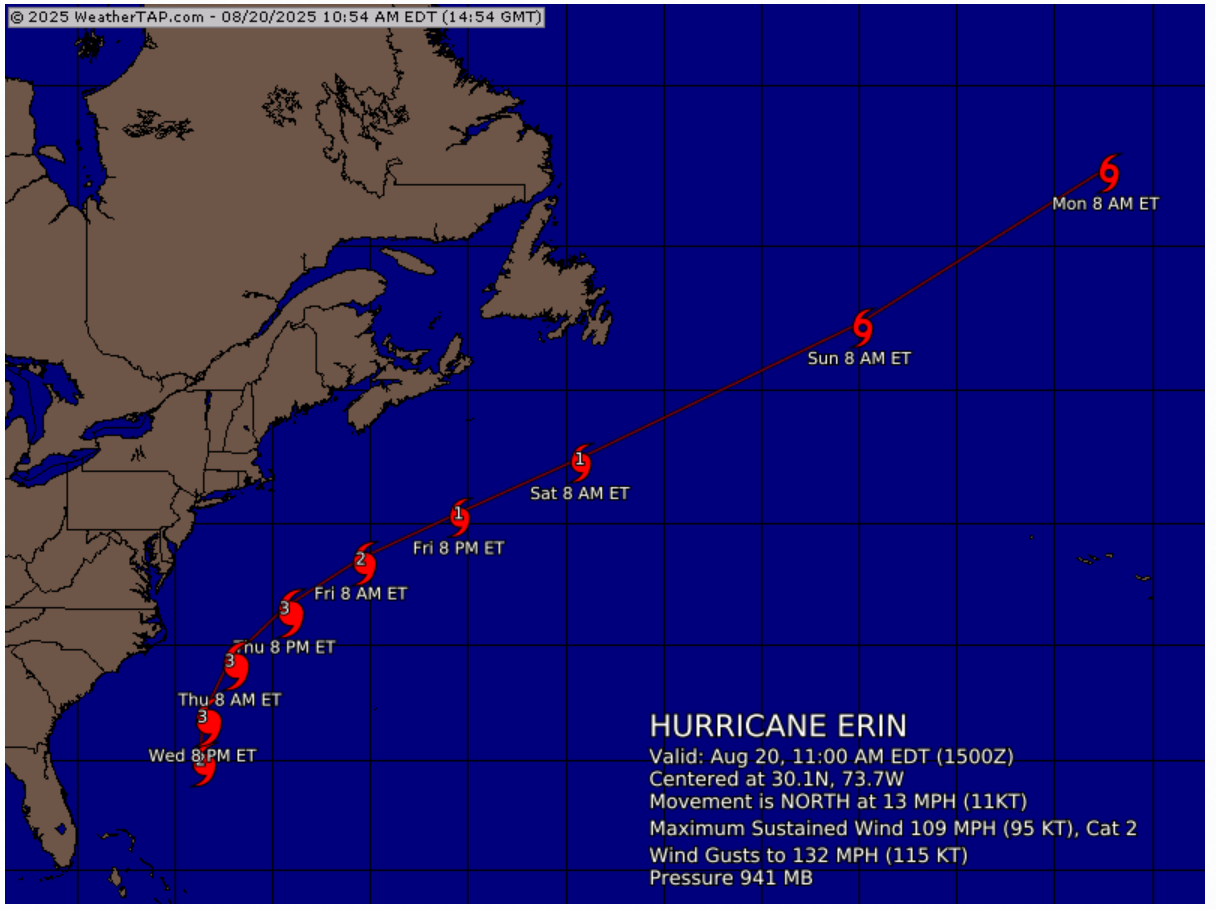
Despite Hurricane Erin remaining several hundred miles off shore, it’s producing 15 foot waves, and deadly rip currents from Florida to New England. Officials at North Carolina’s Wrightsville Beach reported rescuing at least 60 swimmers from rip currents and there were mandatory evacuations that were ordered for the Carolinian Barrier Islands, with warnings of swamped roads and dangerous surf.
Tropical storm force winds between 39 mph and 57 mph are possible along the North Carolina and Virginia coast. A Tropical Storm Warning has been issued for Beaufort Inlet, North Carolina to Chincoteague, Virginia, which includes Pamlico and Albemarle Sounds.
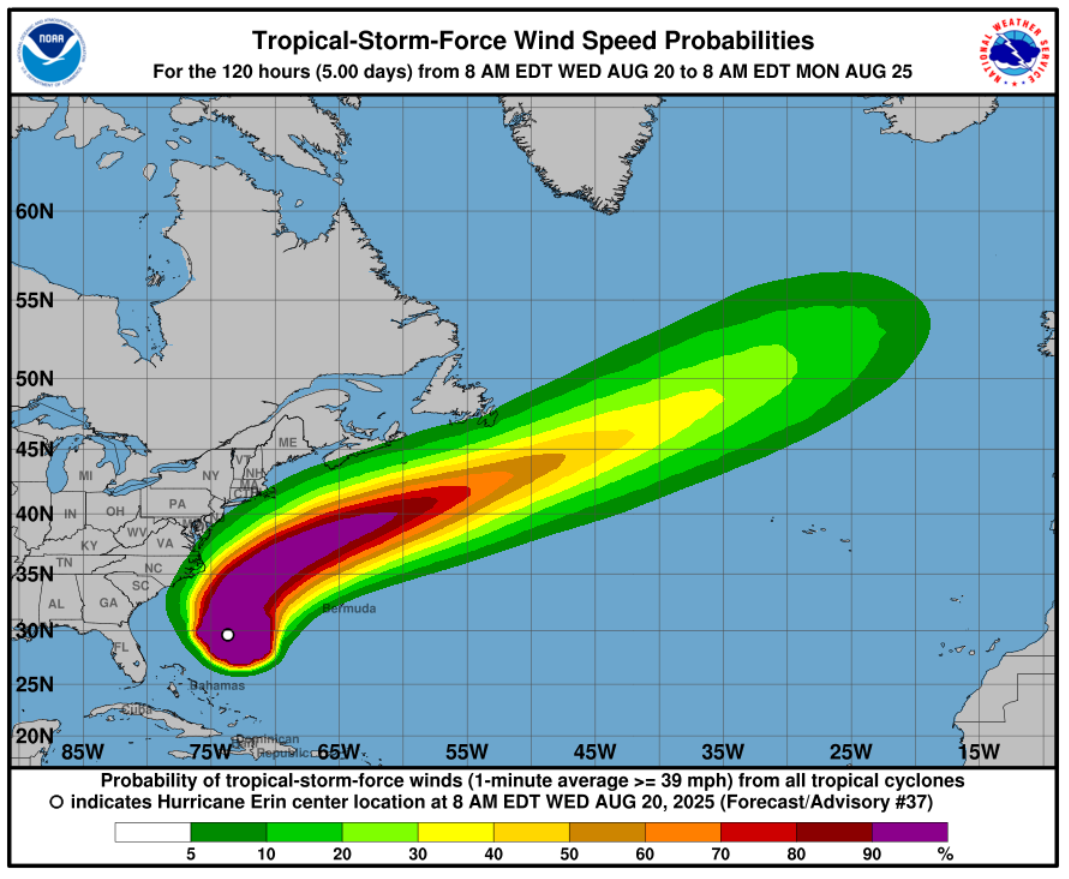
A Storm Surge Warning is in effect for Cape Lookout, North Carolina to Duck, North Carolina where these locations could see 2-4 foot storm surge. Other alerts include Coastal Flood Warning and High Surf Advisories. Large waves could lead to significant beach erosion and over wash, leaving some roads impassible.
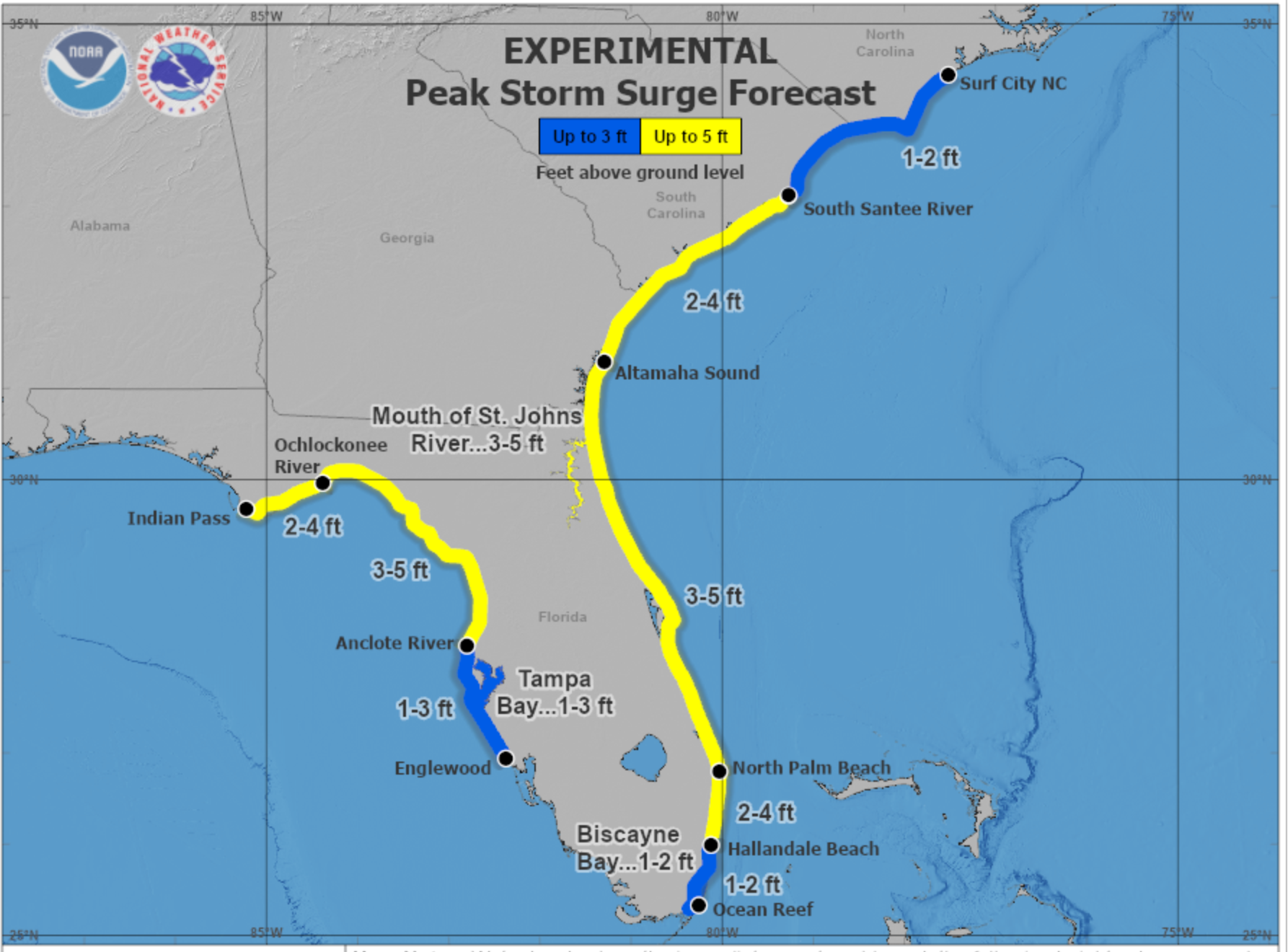
As of Wednesday afternoon, Erin was a Category 2 storm with winds around 110 mph and moving north at 13 mph. However, just a few days ago, Erin rapidly intensified and was a massive Category 5 hurricane which is very rare in August.
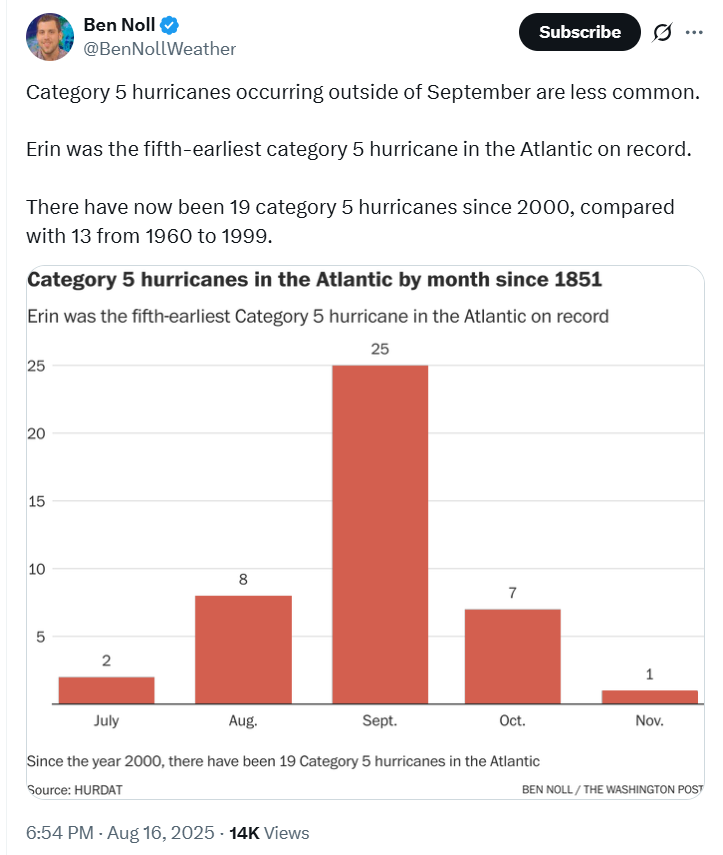
While we continue to watch Hurricane Erin in the Atlantic, we are seeing a few tropical waves off the African coast that have a chance of development in the next week or so.
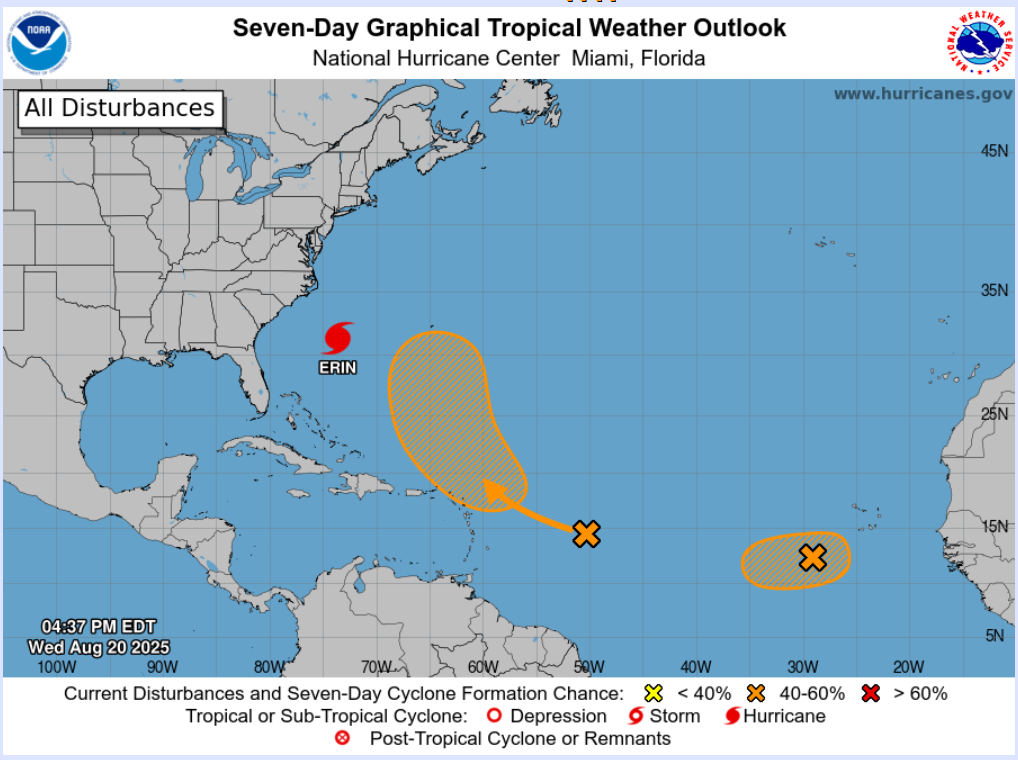
Forecasters still expect an above-normal Atlantic hurricane season: 13–18 named storms (39+ mph), with 5–9 becoming hurricanes (74+ mph) and 2–5 reaching major status (111+ mph). These ranges apply to the full season, June 1–November 30, and include the four named storms already recorded. For comparison, a typical season has 14 named storms, seven hurricanes, and three major hurricanes. The odds are 50% for above-normal activity, 35% for near-normal, and 15% for below-normal.
